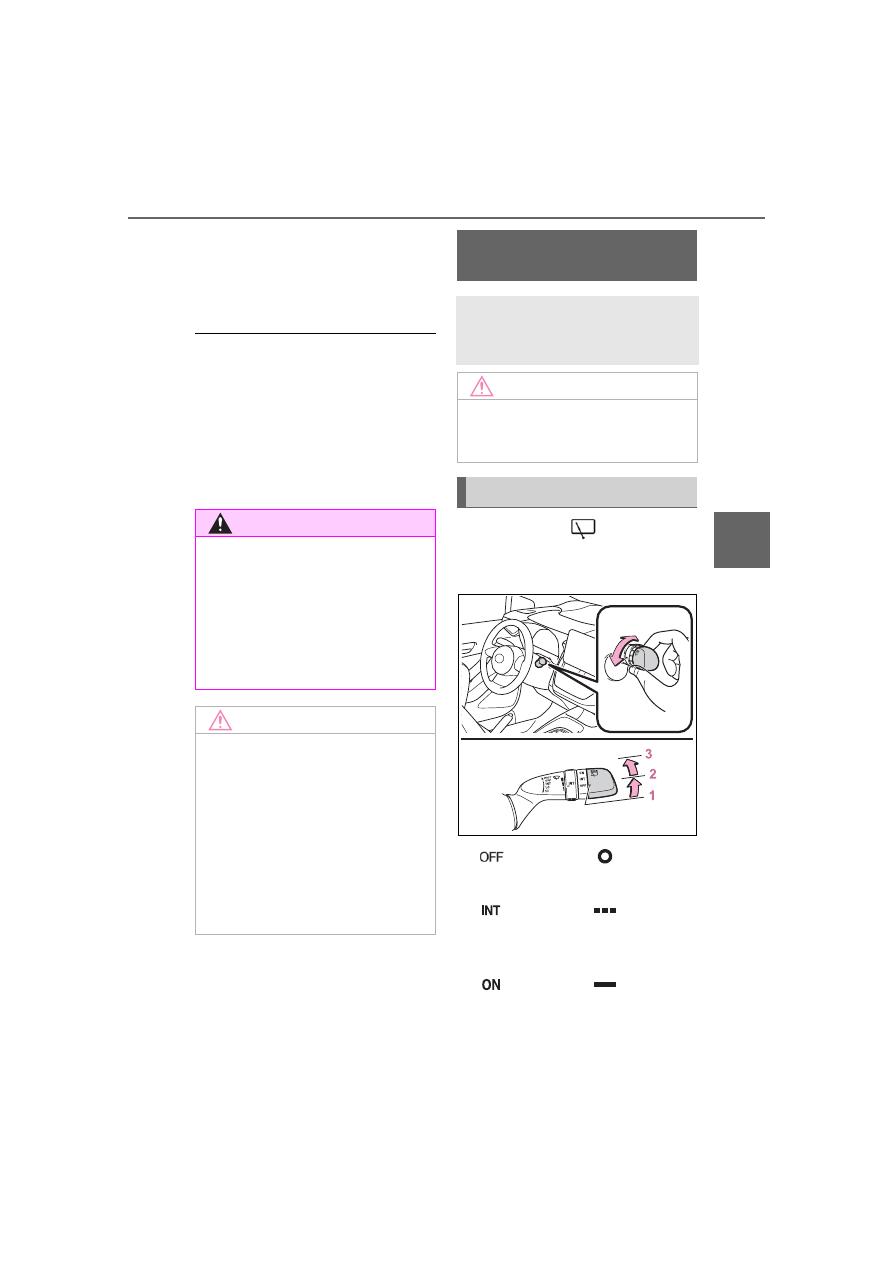Toyota GR Corolla (2023 year). Manual in english - page 9

143
4-3. Operating the lights and wipers
4
Dr
iv
ing
wipers operate once more time
after a short delay to prevent drip-
ping. However, the dripping preven-
tion does not operate while the
vehicle is moving.)
■
The windshield wiper and
washer can be operated when
The engine switch is in ON.
■
If no windshield washer fluid
sprays
Check that the washer nozzles are
not blocked if there is washer fluid in
the windshield washer fluid reser-
voir.
Operating the
switch
operates the rear wiper as fol-
lows:
1
(U.S.A.) or
(Canada)
Off
2
(U.S.A.) or
(Canada)
Intermittent window wiper
operation
3
(U.S.A.) or
(Canada)
Normal window wiper opera-
tion
WARNING
■
Caution regarding the use of
washer fluid
When it is cold, do not use the
washer fluid until the windshield
becomes warm. The fluid may
freeze on the windshield and
cause low visibility. This may lead
to an accident, resulting in death
or serious injury.
NOTICE
■
When the washer fluid tank is
empty
Do not operate the switch continu-
ally as the washer fluid pump may
overheat.
■
When a nozzle becomes
blocked
In this case, contact your Toyota
dealer. Do not try to clear it with a
pin or other object. The nozzle will
be damaged.
Rear window wiper
and washer
Operating the lever can use
the rear window wiper or the
washer.
NOTICE
■
When the rear window is dry
Do not use the wiper, as it may
damage the rear window.
Operating instructions